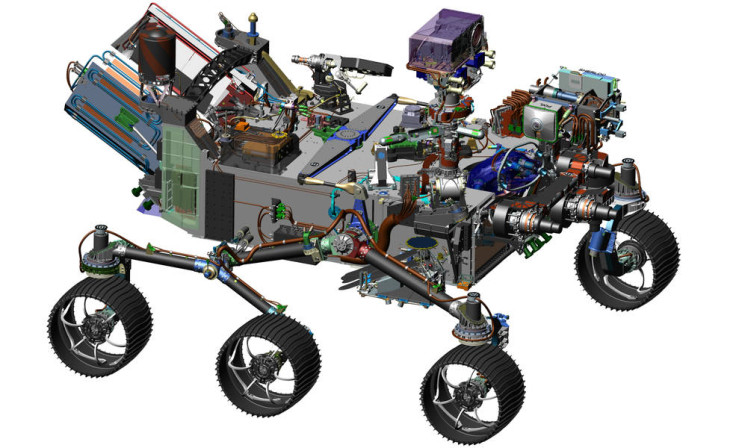Nasa unveils new design for Mars 2020 rover furthering the hunt for life on the Red Planet
The Mars rover will share some of its hardware from its predecessor the Curiosity rover to save costs

Nasa has unveiled the designs for its Mars rover, which is expected to be launched in the summer of 2020. The revelation indicates that the plan for the rover's construction and design is now ready to forge ahead for the final stages.
In an effort to reduce costs, Nasa has decided that some hardware and general appearance of the rover would be borrowed from its predecessor Curiosity. However, the new Mars rover will include a whole host of new instruments to aid its mission.
"The Mars 2020 rover is the first step in a potential multi-mission campaign to return carefully selected and sealed samples of Martian rocks and soil to Earth," said Geoffrey Yoder, acting associate administrator of Nasa's Science Mission Directorate.
"Since Mars 2020 is leveraging the design and some spare hardware from Curiosity, a significant amount of the mission's heritage components have already been built during Phases A and B," said George Tahu, Nasa Mars 2020 program executive.
Once the rover lands safely on Mars it will hunt for evidence of life. Consequently, the rover will come equipped with two instruments on its robotic arms designed to aid its search for life and to collect soil samples, which will help analyse the chemical and mineral characteristics of Martian rocks. The rover will also have a range of sensors to analyse the Red Planet's weather conditions. A "ground-penetrating radar" also will help the rover analyse sub-surface geological structure.
The new rover will also be designed to land safely in more challenging terrain. "As it is descending, the spacecraft can tell whether it is headed for one of the unsafe zones and divert to safe ground nearby," said Allen Chen, Mars 2020 entry, descent and landing lead. "With this capability, we can now consider landing areas with unsafe zones that previously would have disqualified the whole area. Also, we can land closer to a specific science destination, for less driving after landing."
However, the most notable addition to the new rover's design is the microphone, which will record, for the first time, any ambient noises on the surface of the Red Planet. "This will be a great opportunity for the public to hear the sounds of Mars for the first time, and it could also provide useful engineering information," said Mars 2020 Deputy Project Manager Matt Wallace.
Assuming that there are not hitches or delays with the planning for the Mars 2020 program, the new rover is expected to be launched into space in 2020 and land safely on the Red Planet by February 2021.
© Copyright IBTimes 2025. All rights reserved.






















